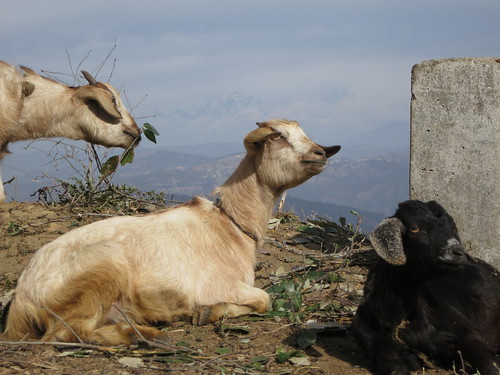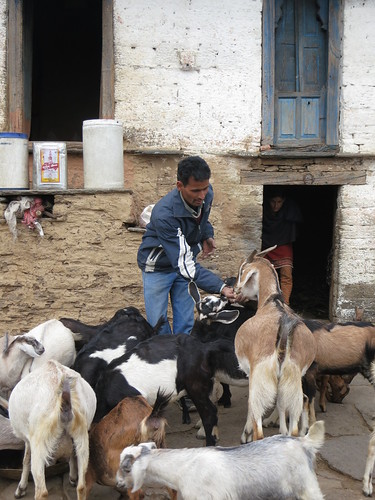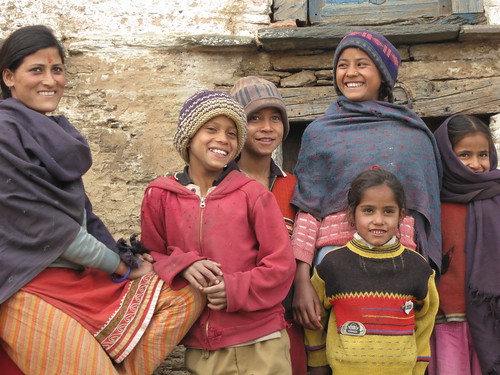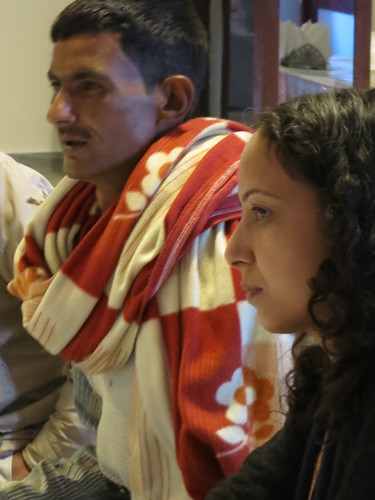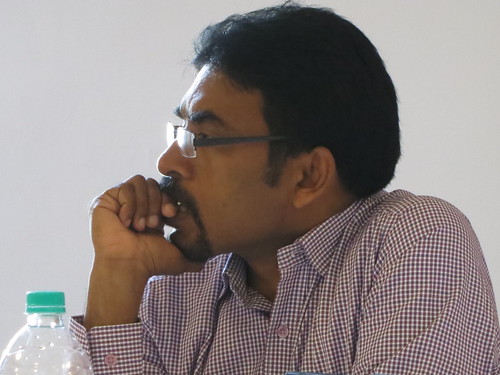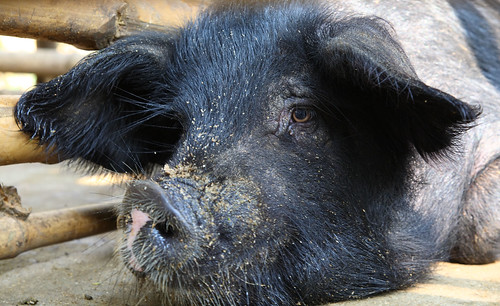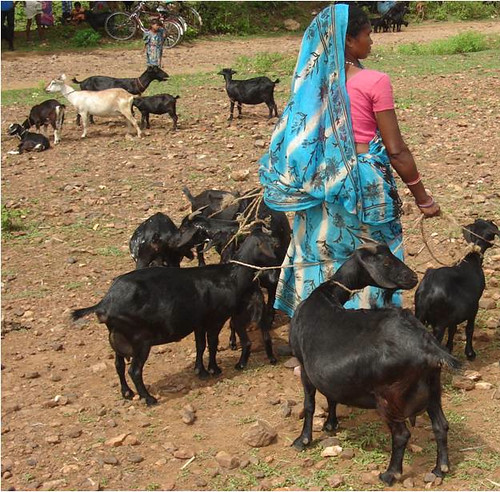Goats rest before the Himalayan mountain range in Kothera Village, Gangolihat, in India’s northern state of Uttarakhand (photo credit: ILRI/Susan MacMillan).
A TATA Trust-funded project conducted by staff of the International Livestock Research Institute (ILRI) called Enhancing Livelihoods through Livestock Knowledge Systems (ELKS) is holding a stakeholder workshop today (28 Feb 2012) on goat value chain development in the mid-hills of northern India’s state of Uttarakhand.
Twenty participants are meeting in Dehrudan, the state capital, where ILRI’s Sapna Jarial is based. The coordinator of ELKS, ILRI’s V Padmakumar (Padma), has organized this workshop with Jarial to get concrete recommendations from actors along the whole goat value chain here as to how to substantially improve goat enterprises among poor hill communities in this region.
Gita Fartiyal, a goat keeper getting her master’s degree in Hindi literature from Almora University, is paying for her education by keeping 40 goats with her brother in a village in Lambgara Block in Almora District, in India’s northern state of Uttarakhand (picture credit: ILRI/Susan MacMillan).
Govind Fartiyal, Gita’s brother, with some of their 40 goats (picture credit: ILRI/Susan MacMillan).
Portrait of goat-keeping family, with Gita Fartiyal (left) (picture credit: ILRI/Susan MacMillan).
Goats matter here. This state has 1.34 million of them! And there are signs that goats could provide farmers here with a pathway from subsistence to commercial enterprises.
Goat is the preferred meat in India,’ says Padma, ‘and demand for goat meat is increasing. There is thus great scope for using goats as an engine for reducing poverty.’
Terraced landscape in a village in Lambgara Block, Almora District, in India’s northern state of Uttarakhand (picture credit: ILRI/Susan MacMillan).
While the focus of the Indian government till now has been on sheep development in this mid-Himalayan region, the sheep population is declining while the goat population is exploding, having increased 10-15% in just 10 years (1997-2007). Only sporadic initiatives support goat development in the state. The TATA Trust, ILRI and other participants at this workshop are interested to support this till-now neglected sub-sector through interventions and policies that support better goat health, breeding, feeding and marketing.
Mr Gafur, Dehrudan goat trader, and ILRI’s Sapna Jarial at a stakeholder workshop on Goat Value Chain Development, held in Dehrudan, 28 Feb 2012, in India’s northern state of Uttarakhand (picture credit: ILRI/Susan MacMillan).
This workshop is tasked with coming with practical ideas for substantially improving the state’s goat production in the next three years. At the same time, since goats here graze common lands under open grazing systems, it is vital that this development does not come at the expense of the fragile mountain environment.
ILRI’s V Padmakumar, coordinator of the TATA-funded ELKS project (Enhancing Livelihoods through Livestock Knowledge Systems), listens to discussions at a stakeholder workshop on Goat Value Chain Development, held in Dehrudan, 28 Feb 2012, in India’s northern state of Uttarakhand (picture credit: ILRI/Susan MacMillan).
Read more about the ELKS project and check out a recent article about ELKS on the ILRI Asia Blog.

